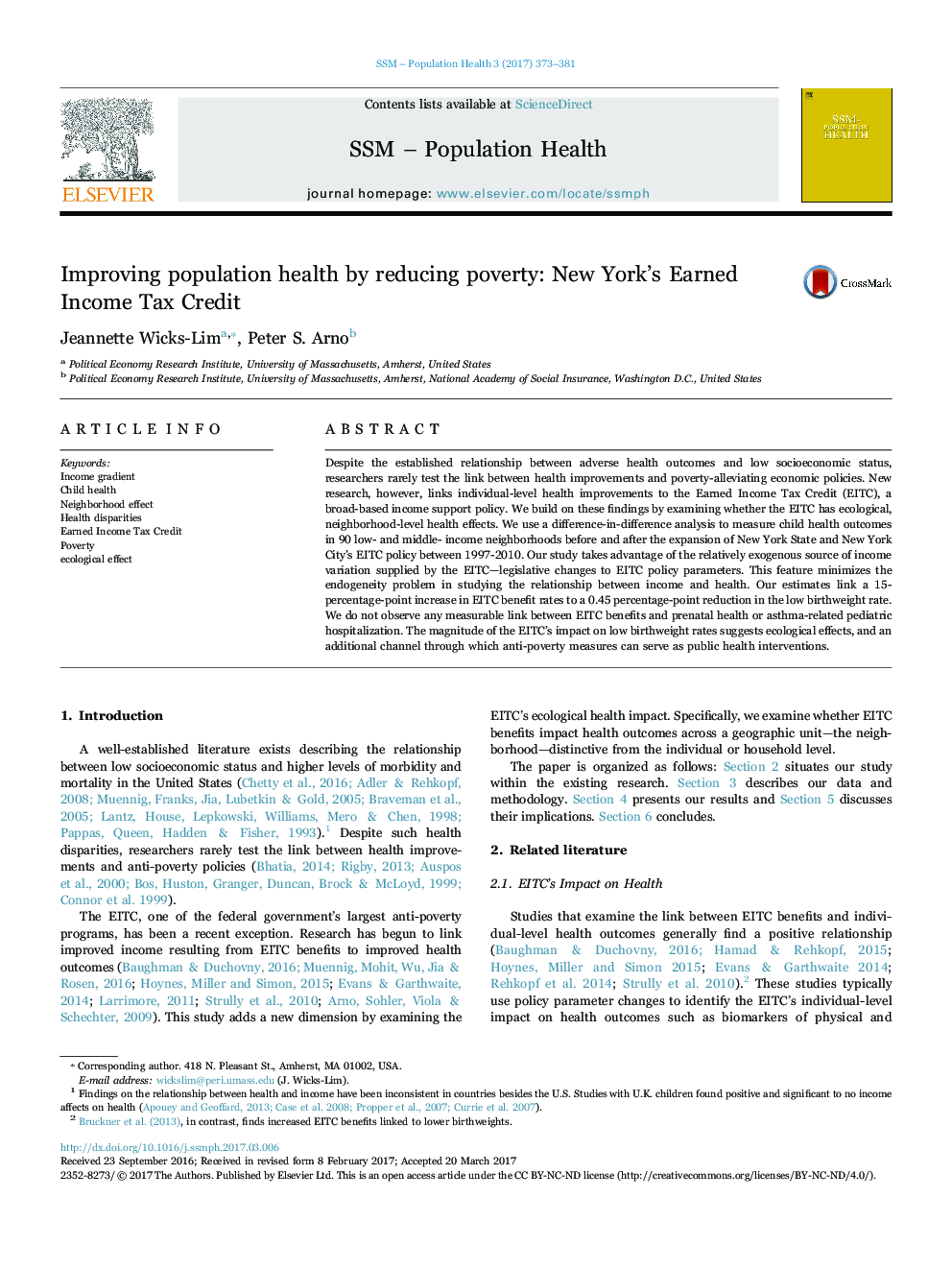| Article ID | Journal | Published Year | Pages | File Type |
|---|---|---|---|---|
| 5123268 | SSM - Population Health | 2017 | 9 Pages |
â¢Increasing EITC benefit rates is associated with reduced low birthweight rates.â¢EITC improves health at neighborhood levels, suggesting ecological effects.â¢Exogenous income variation via EITC policy changes minimizes endogeneity problems.â¢Income support policies, like EITC, lower poverty and improve population health.
Despite the established relationship between adverse health outcomes and low socioeconomic status, researchers rarely test the link between health improvements and poverty-alleviating economic policies. New research, however, links individual-level health improvements to the Earned Income Tax Credit (EITC), a broad-based income support policy. We build on these findings by examining whether the EITC has ecological, neighborhood-level health effects. We use a difference-in-difference analysis to measure child health outcomes in 90 low- and middle- income neighborhoods before and after the expansion of New York State and New York City's EITC policy between 1997-2010. Our study takes advantage of the relatively exogenous source of income variation supplied by the EITC-legislative changes to EITC policy parameters. This feature minimizes the endogeneity problem in studying the relationship between income and health. Our estimates link a 15-percentage-point increase in EITC benefit rates to a 0.45 percentage-point reduction in the low birthweight rate. We do not observe any measurable link between EITC benefits and prenatal health or asthma-related pediatric hospitalization. The magnitude of the EITC's impact on low birthweight rates suggests ecological effects, and an additional channel through which anti-poverty measures can serve as public health interventions.
